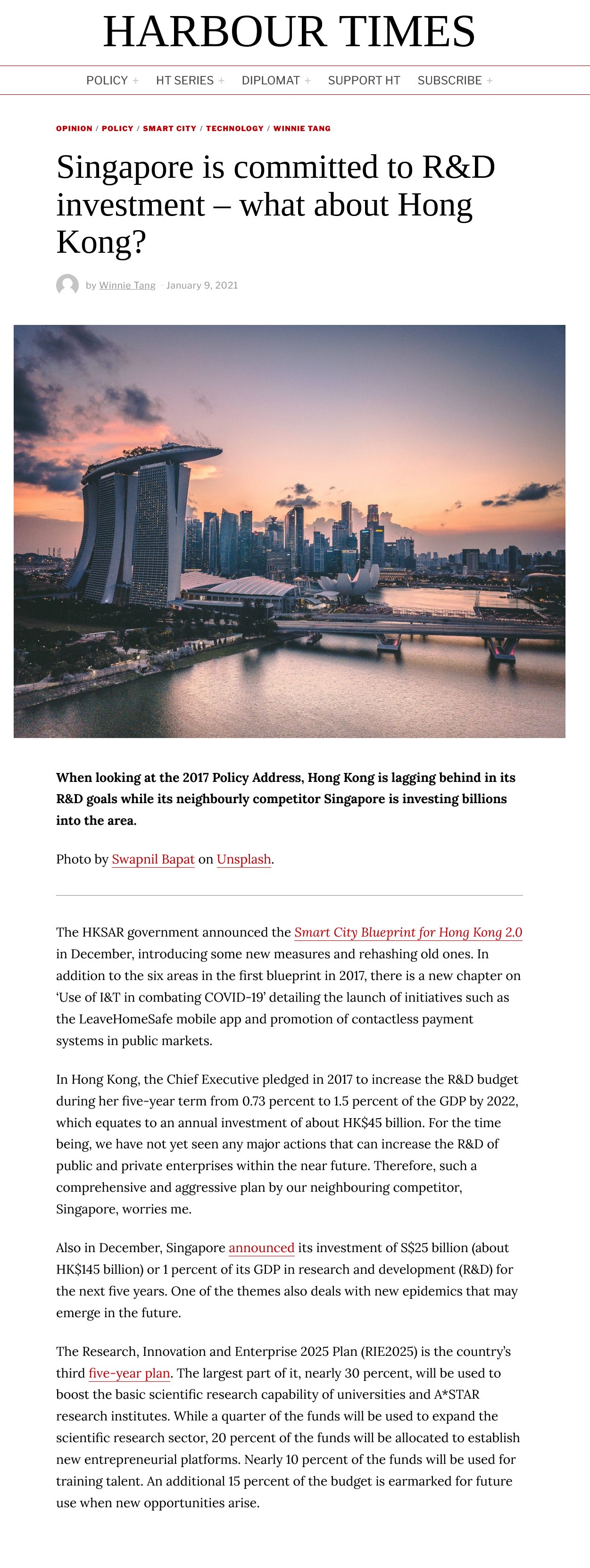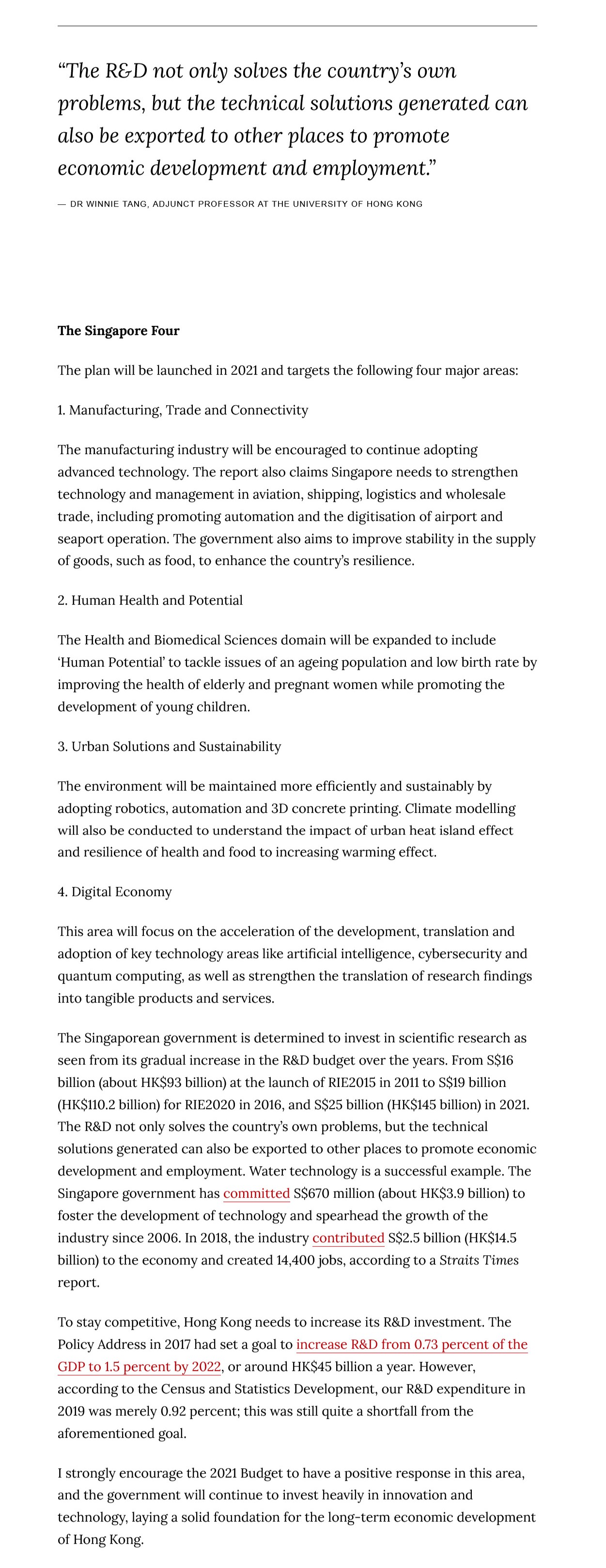網上版請按此


Singapore is committed to R&D investment – what about Hong Kong?
The HKSAR government announced the Smart City Blueprint for Hong Kong 2.0 in December, introducing some new measures and rehashing old ones. In addition to the six areas in the first blueprint in 2017, there is a new chapter on 'Use of I&T in combating COVID-19' detailing the launch of initiatives such as the LeaveHomeSafe mobile app and promotion of contactless payment systems in public markets.
In Hong Kong, the Chief Executive pledged in 2017 to increase the R&D budget during her five-year term from 0.73 percent to 1.5 percent of the GDP by 2022, which equates to an annual investment of about HK$45 billion. For the time being, we have not yet seen any major actions that can increase the R&D of public and private enterprises within the near future. Therefore, such a comprehensive and aggressive plan by our neighbouring competitor, Singapore, worries me.
Also in December, Singapore announced its investment of S$25 billion (about HK$145 billion) or 1 percent of its GDP in research and development (R&D) for the next five years. One of the themes also deals with new epidemics that may emerge in the future.
The Research, Innovation and Enterprise 2025 Plan (RIE2025) is the country's third five-year plan. The largest part of it, nearly 30 percent, will be used to boost the basic scientific research capability of universities and A*STAR research institutes. While a quarter of the funds will be used to expand the scientific research sector, 20 percent of the funds will be allocated to establish new entrepreneurial platforms. Nearly 10 percent of the funds will be used for training talent. An additional 15 percent of the budget is earmarked for future use when new opportunities arise.
The Singapore Four
The plan will be launched in 2021 and targets the following four major areas:
1. Manufacturing, Trade and Connectivity
The manufacturing industry will be encouraged to continue adopting advanced technology. The report also claims Singapore needs to strengthen technology and management in aviation, shipping, logistics and wholesale trade, including promoting automation and the digitisation of airport and seaport operation. The government also aims to improve stability in the supply of goods, such as food, to enhance the country's resilience.
2. Human Health and Potential
The Health and Biomedical Sciences domain will be expanded to include 'Human Potential' to tackle issues of an ageing population and low birth rate by improving the health of elderly and pregnant women while promoting the development of young children.
3. Urban Solutions and Sustainability
The environment will be maintained more efficiently and sustainably by adopting robotics, automation and 3D concrete printing. Climate modelling will also be conducted to understand the impact of urban heat island effect and resilience of health and food to increasing warming effect.
4. Digital Economy
This area will focus on the acceleration of the development, translation and adoption of key technology areas like artificial intelligence, cybersecurity and quantum computing, as well as strengthen the translation of research findings into tangible products and services.
The Singaporean government is determined to invest in scientific research as seen from its gradual increase in the R&D budget over the years. From S$16 billion (about HK$93 billion) at the launch of RIE2015 in 2011 to S$19 billion (HK$110.2 billion) for RIE2020 in 2016, and S$25 billion (HK$145 billion) in 2021. The R&D not only solves the country's own problems, but the technical solutions generated can also be exported to other places to promote economic development and employment. Water technology is a successful example. The Singapore government has committed S$670 million (about HK$3.9 billion) to foster the development of technology and spearhead the growth of the industry since 2006. In 2018, the industry contributed S$2.5 billion (HK$14.5 billion) to the economy and created 14,400 jobs, according to a Straits Times report.
To stay competitive, Hong Kong needs to increase its R&D investment. The Policy Address in 2017 had set a goal to increase R&D from 0.73 percent of the GDP to 1.5 percent by 2022, or around HK$45 billion a year. However, according to the Census and Statistics Development, our R&D expenditure in 2019 was merely 0.92 percent; this was still quite a shortfall from the aforementioned goal.
I strongly encourage the 2021 Budget to have a positive response in this area, and the government will continue to invest heavily in innovation and technology, laying a solid foundation for the long-term economic development of Hong Kong.
Dr. Winnie Tang
Adjunct Professor, Department of Computer Science, Faculty of Engineering; Department of Geography, Faculty of Social Sciences; and Faculty of Architecture, The University of Hong Kong.